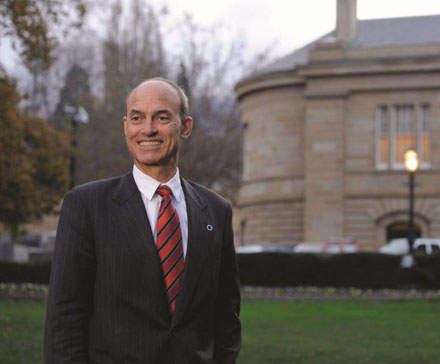
Guy Barnett
The Hodgman Liberal Government’s commitment to rebuilding Tasmania’s forest industry is about growing investment, creating jobs, increasing exports and confidence and ending public subsidies according to Guy Barnett. Source: The Mercury
In an article in The Mercury Mr Barnett said:
“Since the 2014 election we’ve seen that our plan is working, with a 33% increase in forestry jobs and a 32% increase in production since 2013-14.
In addition, following the recent announcement of a fantastic $60.7 million agreement for forestry rights for pulpwood plantations, Sustainable Timber Tasmania (STT) will be debt free and well on the way to being commercially sustainable.
There is still more to do, but with the transition from Forestry Tasmania to STT already on track to improve the bottom line by $30 million across four years, we have made terrific progress from the days when Labor’s policy was to provide a $25 million annual taxpayer subsidy to the business.
With this renewed confidence, now is the time to invest in the industry and promote further jobs growth.
That’s why in our Building Your Future Plan we’ve backed the industry growth target to double the forest, fine timber and wood fibre industry value-add to $1.2 billion by 2036.
Four million dollars was provided in the state budget to back the industry growth plan through various initiatives, including assisting industry marketing and raising community awareness of the value — economically, environmentally and socially — of Tasmanian wood.
We are helping to achieve industry growth by encouraging innovation, on-island value-adding, more efficient processing of timber to reduce wastage, and by delivering the security of supply that disappeared as the Labor-Green government locked up production forests.
Importantly, another of the targets set in our Building Your Future Plan is no more lockups.
Not content with the lock ups under the last Labor-Green government, the Greens are now calling for a total end to native forest harvesting — despite the fact that we grow and regrow native forests so well in Tasmania that STT harvests almost exclusively regrowth forests that have been harvested before.
If we get another Labor-Green government we would see the destruction of thousands more jobs from this ideologically driven agenda.
Both native forest and plantation timber products have a strong, viable future under a Liberal government.
Already, we’ve seen a massive increase in hardwood plantation production — from 1.3 million tonnes in 2014-15 to over 2 million tonnes a year being produced now.
A third forestry target in the Building Your Future plan sets a target to work towards doubling production from Tasmania’s hardwood plantations by 2022.
These targets will set the industry up for a long-term future and provide security to thousands of jobs, mostly in regional areas.
We are already implementing policies to work towards this target, including our Wood Encouragement Policy, the first of its kind in Australia, which means wood will need to be considered for use in future public building projects, thereby supporting local industry and regional jobs.
And the state and federal governments recently signed a 20-year extension on the Regional Forest Agreement, the first state in the country to do so.
This important agreement helps to secure Tasmanian forestry jobs and ensures Tasmania’s forest management system is delivering biodiversity and conservation outcomes.
Our actions stand in stark contrast to those of the previous Labor-Green government, where thousands of jobs were lost under the disastrous so-called forest peace deal and large swathes of production forest locked up.
Tasmanian timber is a renewable and reliable product. We have expert craftspeople turning local specialty timbers into fine furniture, architectural and artistic features and other stunning pieces. Tasmanians should be proud of our local forestry industry, the workers, and the practices in place to make the industry sustainable and renewable.
The Hodgman Liberal Government is providing the industry with the confidence it needs to not only survive, but flourish.”





